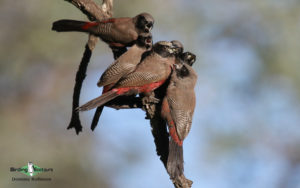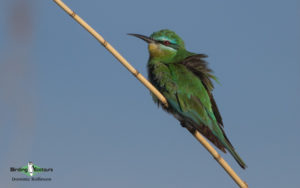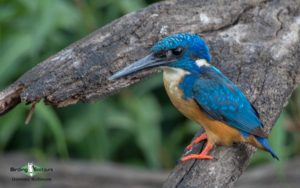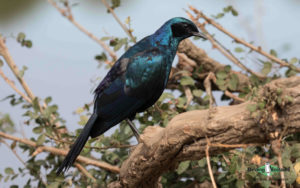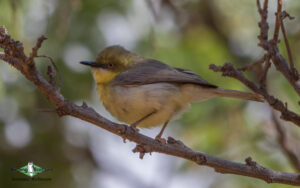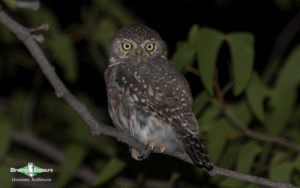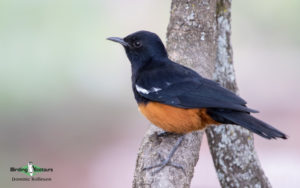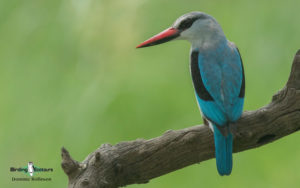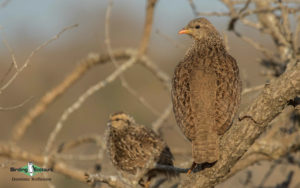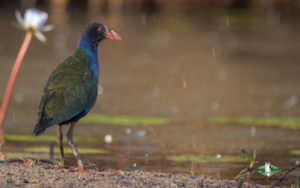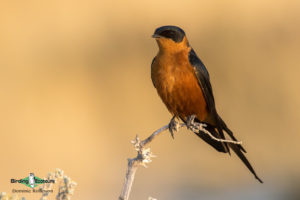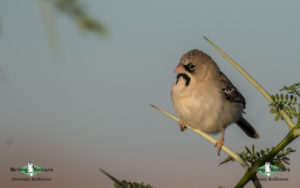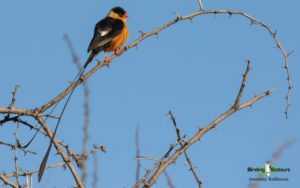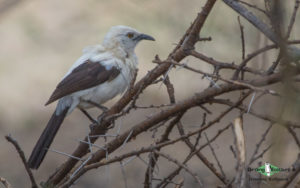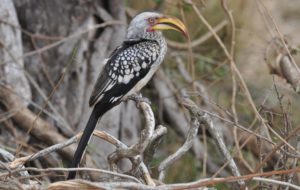1-3-day Northeastern Johannesburg/Pretoria Birding Tour
1-3-day Northeastern Johannesburg/Pretoria Birding Tour
The 1–3-day trip to the northeastern parts of ‘wider’ Johannesburg/Pretoria offers both species richness and species diversity. A day list of 150 in the summer and 120 in the winter even on a 1-day trip is not an uncommon achievement.
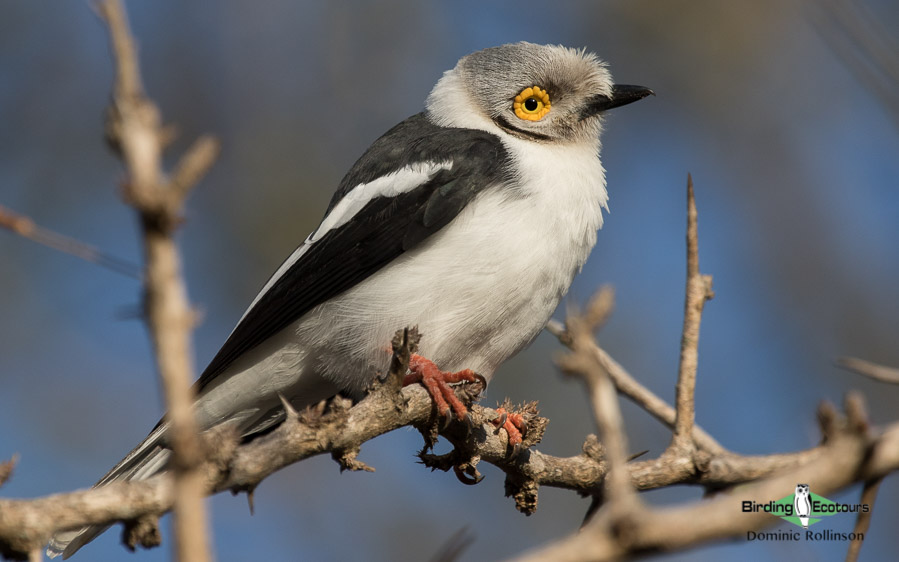
One-day Trip – Northeastern Johannesburg/Pretoria area
An early start is always recommended in order to maximize the special sightings and greatly increase our chances for endemics and a higher species total, but a leisurely start to this area, especially in the winter, can also be very productive. The birding sites will include the likes of the Verena grasslands, Mabusa Nature Reserve, and the Wilge River Valley. Each of these three sites has a different ‘main habitat’, and therefore the species differ greatly from site to site. Some of the main target species that we find in the beautiful Verena grassland area include White-bellied Bustard (Barrow’s Korhaan), the endemic Melodious Lark, Red-winged Francolin, and Secretarybird, as well as Long-tailed and Red-collared Widowbirds. In summer we look for Banded Martin and the rare Short-tailed Pipit.
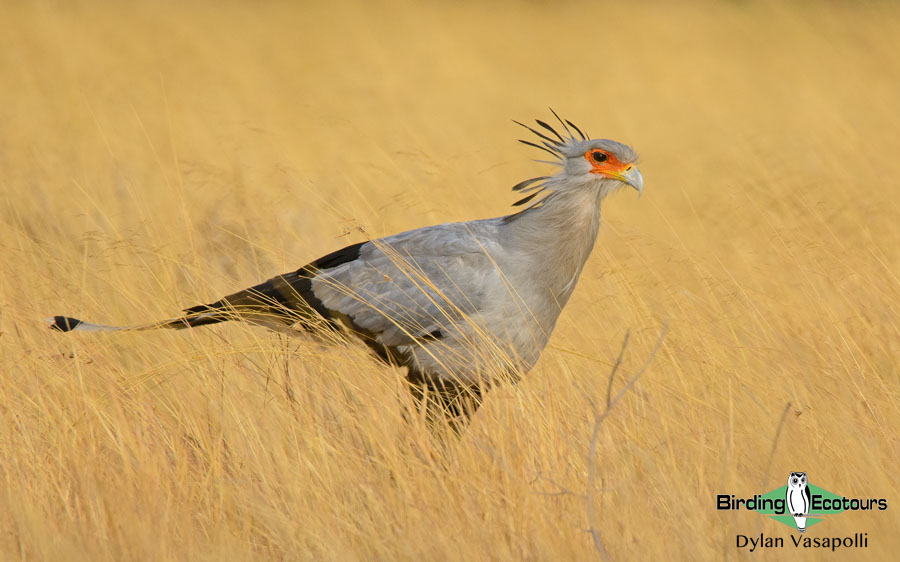
Mabusa Nature Reserve is an incredible destination with rolling grassy hills and broad-leafed and riverine woodland – a true gem, and really underrated on the South African birding scene. Our guides know this reserve very well and can find the likes of Green-capped Eremomela, Flappet and Fawn-colored Larks, Mocking Cliff Chat, Lazy Cisticola, Shelley’s and Coqui Francolins, Half-collared and Woodland Kingfishers, Ovambo Sparrowhawk, and sometimes the rare White-backed Night Heron! The Wilge River dissects the area and forms the spectacular Wilge River Valley, where we have a good chance of finding many riverine woodland species, including Greater Double-collared Sunbird, White-crested Helmetshrike, Grey-headed and Orange-breasted Bushshrikes, Pearl-spotted Owlet, Grey Tit-Flycatcher, Rock Kestrel, Green Wood Hoopoe, and White-fronted Bee-eater, and sometimes we find Verreaux’s Eagle as well as Little Sparrowhawk.
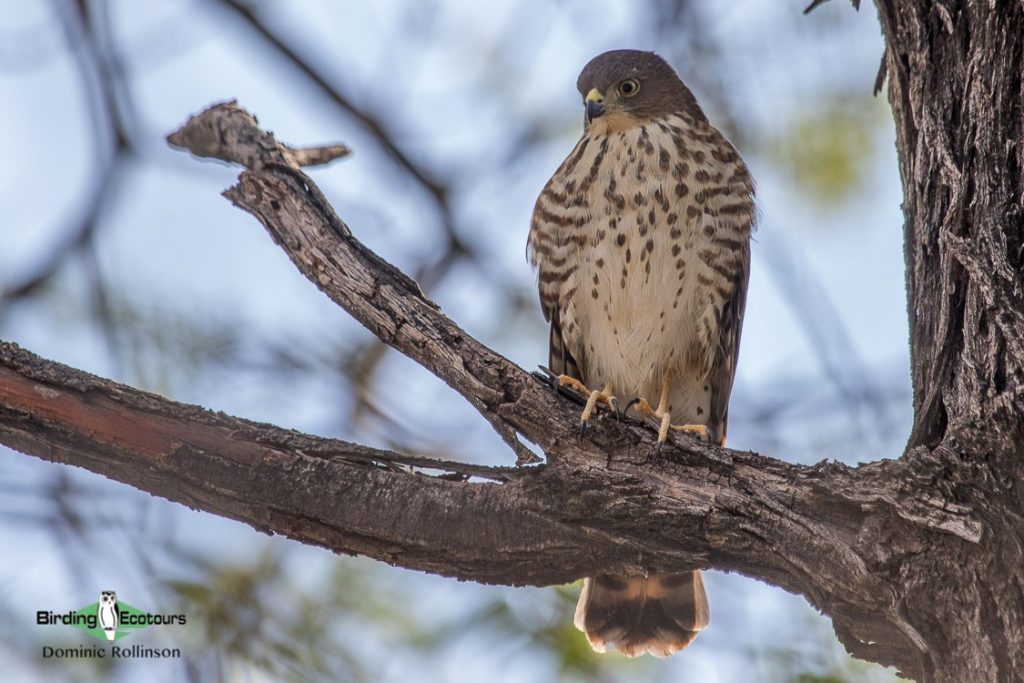
As mentioned before, this day trip can really give you a balanced day list with species from indigenous grassland areas, riverine woodland, and broad-leaved and acacia woodland to rocky ridges and outcrops. The scenery is also fantastic, and there is always a chance of bumping into a few mammals on the day; some of them include Black-backed Jackal, Black Wildebeest, and Yellow Mongoose.
Extension: 2-3-day Trip (Overnight Wilge River Valley/Rust de Winter)
As an extension to this brilliant one-day trip to the northeastern parts of Johannesburg/Pretoria we can stay over in the Wilge River Valley and/or the Rust de Winter area. We are then able to extend our birding hours by waking up to the morning chorus and enjoying a cup of coffee while keeping an eye out for cuckoos, robin-chats, and other fantastic woodland species. Of course there are even more benefits to staying the night in these areas; one can be sure to bird the important sites more thoroughly, and we then have the opportunity to visit the fantastic Mkhombo Nature Reserve – one of the absolute local hotspots among Johannesburg- and Pretoria-based birders. A full day’s birding, accessing a few key sites and Mkhombo Dam, can produce over 200 species! The dam and surrounding woodlands offer a multitude of waterfowl as well as some excellent dry acacia specials for the area. Some examples include Goliath and Black Herons, Red-billed and Blue-billed Teals, Yellow-billed Stork, Osprey, and African Fish Eagle. The summer months often deliver specials such as Black-winged Pratincole, Greater Painted-snipe, Blue-cheeked Bee-eater, Allen’s Gallinule, Harlequin Quail, and Lesser Moorhen. The drier acacia bush offers Marico Flycatcher, Chinspot Batis, Scaly-feathered Weaver, Southern Pied Babbler, Black-faced Waxbill, Barred Wren-Warbler, Chestnut-vented Warbler, and the uncommon Cape Penduline Tit. We are able to make an excellent two-day and even three-day trip out of these fantastic birding areas mentioned here and in the one-day northeastern itinerary.
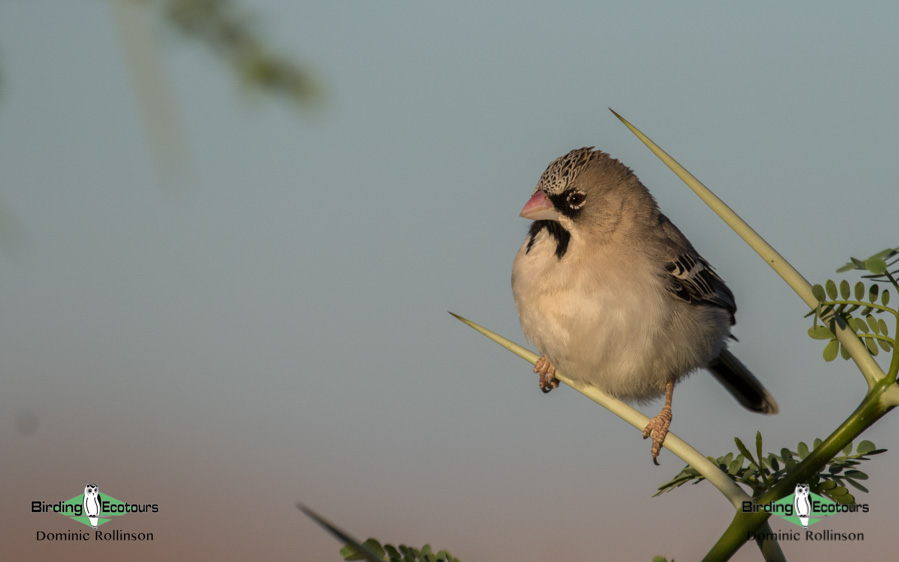
Please get in touch with us for more detailed information and about how we can make this trip a success filled with lifers!
Download ItinerarySouth Africa: 1-Day Mabusa Nature Reserve and Mkhombo Dam Birding Tour Report
By Dylan Vasapolli
This is an example of a typical 1-day northeastern Johannesburg/Pretoria birding trip report. Please email us ([email protected]) for more trip reports from this destination.
DOWNLOAD TRIP REPORT
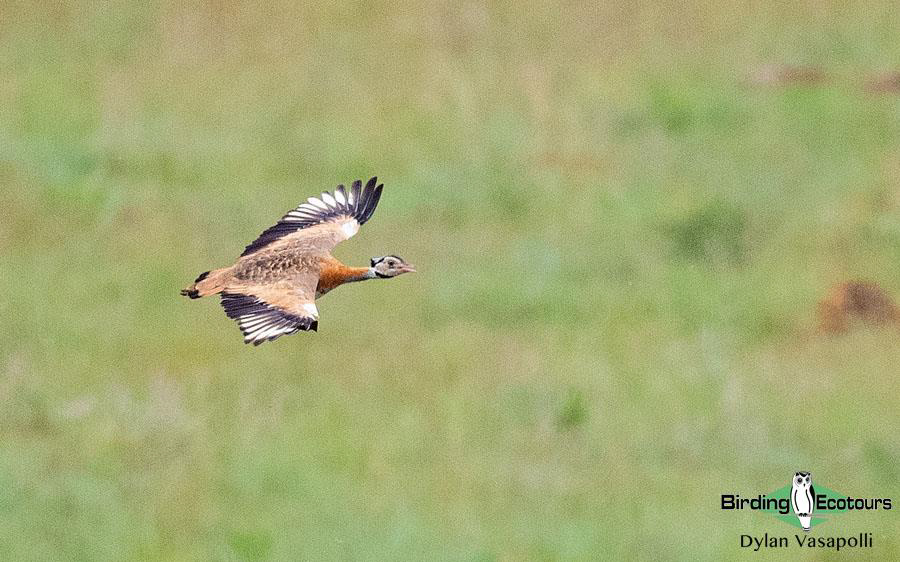
Overview
This Johannesburg/Pretoria-based, South Africa, birding day tour takes one to an almost-forgotten corner of the Mpumalanga province. Here lie the mega birding sites of Mabusa Nature Reserve, the Verena grasslands and the Mkhombo Dam Nature Reserve – all of which are frequently overlooked sites, though deserve to be included on the main birding routes around South Africa. Verdant rolling grassy hills line the outside of Mabusa Nature Reserve, and play host to some incredibly sought-after species and are arguably the best areas in the country for the likes of Melodious Lark and White-bellied Bustard, and in the summer months a handful of other species such as Short-tailed Pipit. Mabusa Nature Reserve itself hosts a broad spectrum of birds with diverse broad-leafed woodlands on rocky ground dominating the area, producing scarce species such as Fawn-coloured Lark and Green-capped Eremomela. Mkhombo Dam Nature Reserve, as its name suggests, is based around the large Mkhombo Dam, and while water levels fluctuate widely, it generally hosts a large number of waterbirds, while additionally supporting an excellent suite of acacia thornveld species.
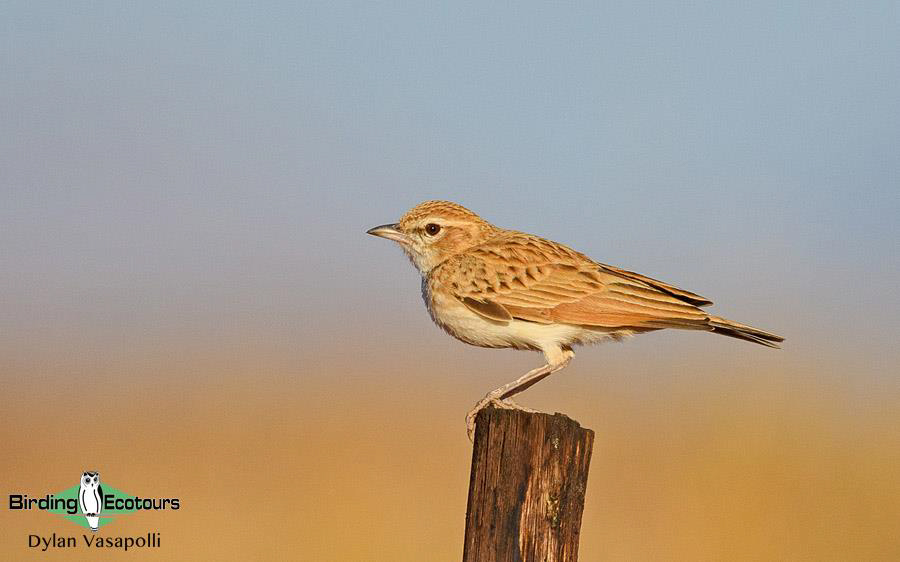
This trip was carried out for a single client. A more detailed account of the day trip is given below, and a total list of species can be seen following this.
Detailed Report:
We departed Pretoria early in the morning, and found ourselves in the Verena Grasslands shortly after sunrise. We had a bit of weather to contend with, though thankfully the light rain soon abated, but cool, overcast and windy conditions persisted. We started off at a wetland where we enjoyed flocks of Orange-breasted Waxbill as they left to forage, along with others such as Purple Heron, Cape Grassbird, Little Bee-eater, Cape Weaver and Red-collared Widowbird. We also enjoyed a variety of warblers with African Reed, Lesser Swamp and Little Rush Warblers all showing. Red-chested Flufftail and African Rail were vocal but remained unseen. We eventually carried on, stopping for a close pair of Coqui Francolins next to the road, along with a brief Melodious Lark sighting, a Buffy Pipit next to the road, a Greater Kestrel, and a mixed flock of hirundines that included Banded and Brown-throated Martins and Greater Striped, South African Cliff and White-throated Swallows. Further stops yielded a lovely family of three Blue Cranes, South Africa’s national bird, Fawn-coloured Lark, Cloud and Desert Cisticolas, and a pair of White-bellied Bustards. This must surely rank as the best location within South Africa to view the latter species!
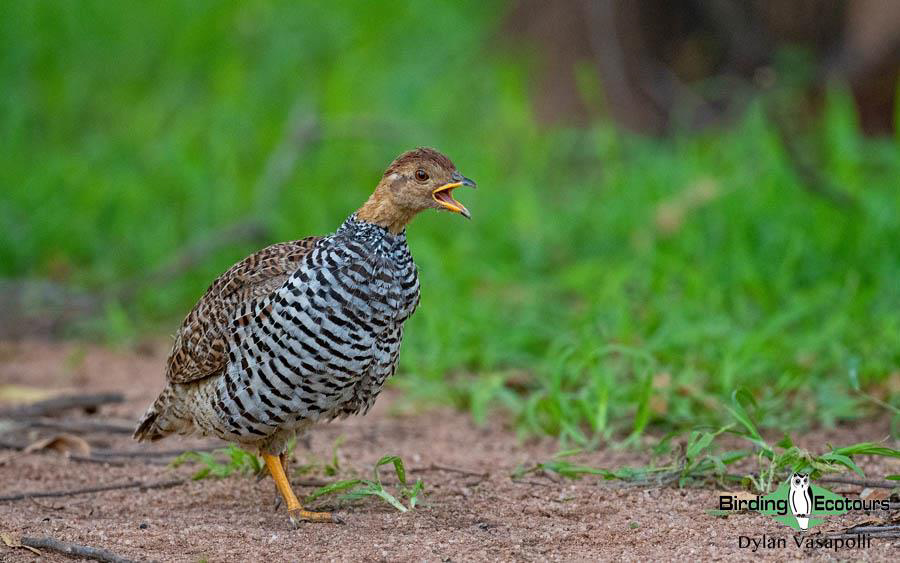
We eventually pressed onwards to Mabusa Nature Reserve, where we concentrated on more woodland-based birding. With the sun now out, things were on the quiet side, but our patience paid off as we enjoyed a bustling bird party filled with the likes of Green-capped Eremomela, Brubru, Yellow-fronted Tinkerbird, Southern Black Tit, Lazy Cisticola and Southern Black Flycatcher, amongst others. Nearby, a confiding pair of Short-toed Rock Thrushes showed well, as did Mocking Cliff Chat and Familiar Chat. We carried on birding, searching for various other species such as Bushveld Pipit and Red-headed Weaver that we were still missing, but things were awfully quiet and we only added various widespread species, and our last notable sighting before leaving the area was of a large flock of nesting White-fronted Bee-eaters.
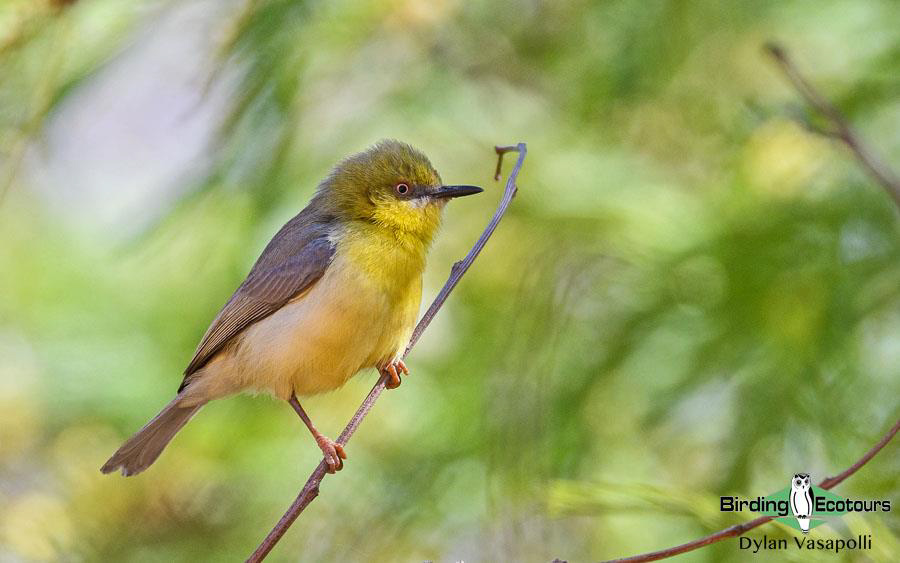
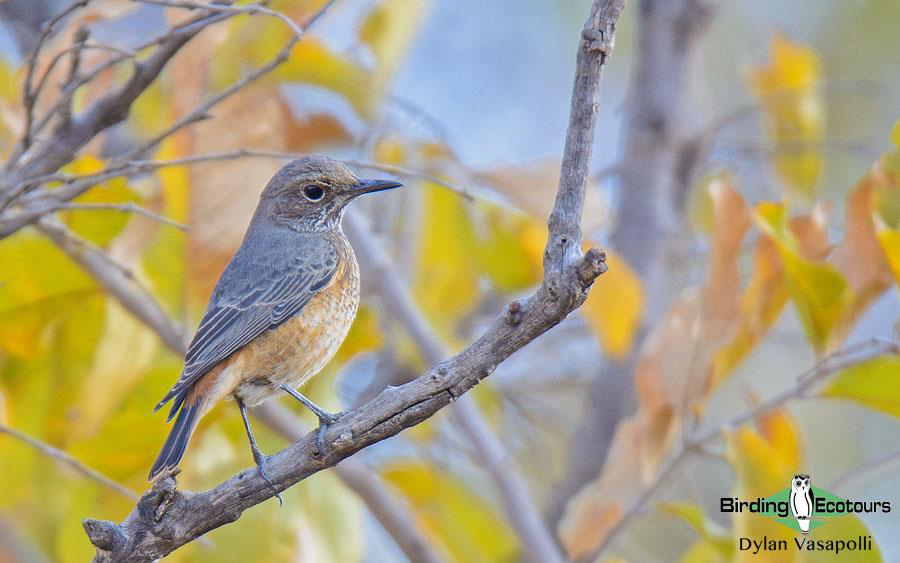
We then transited to the Mkhombo Dam Nature Reserve where we spent the remainder of the day. The water level had risen substantially in the recent days/weeks, as the waterline now infringed on the treeline and grasslands that once dotted the edge. This made navigating the dam’s edge tricky as it was not clear where the water actually ended, and also meant that the overall waterbird numbers were low as many waterbirds and shorebirds had probably sought out more attractive areas. Aside from Blacksmith Lapwings and Black-winged Stilts, there were no shorebirds to speak of, however eventually we were able to track down some waterbirds congregating in a specific area, which included White-faced Whistling Duck, Red-billed Teal, Yellow-billed Stork, Great Egret, Black Heron, African Spoonbill and African Swamphen, amongst others.
With virtually all of the waterbirds exhausted, we made our way into the acacia thornveld that surrounds the dam, where we spent some time working the area. A short and sharp rain shower brought things to life, and we enjoyed a supremely productive end to our day. Small, colorful seedeaters were present in large numbers, with Blue Waxbill and both Jameson’s and Red-billed Firefinches dominating the numbers, though we also managed to find Green-winged Pytilia, Violet-eared Waxbill and Cut-throat Finch. We did well to pick up a scarce Great Sparrow amongst a group of more common Southern Grey-headed Sparrows. A lively group of Cape Penduline Tits played hide and seek with us for a bit, eventually showing well, and we were also pleased to find both Burnt-necked Eremomela and the regionally rare Yellow-bellied Eremomela. Marico Flycatchers perched on the tops of the trees, as did an Acacia Pied Barbet and Kalahari Scrub Robin, before a Gabar Goshawk dashed through the area. A surprise Double-banded Sandgrouse was seen on our way out, and brought to a close a fun and successful day out.
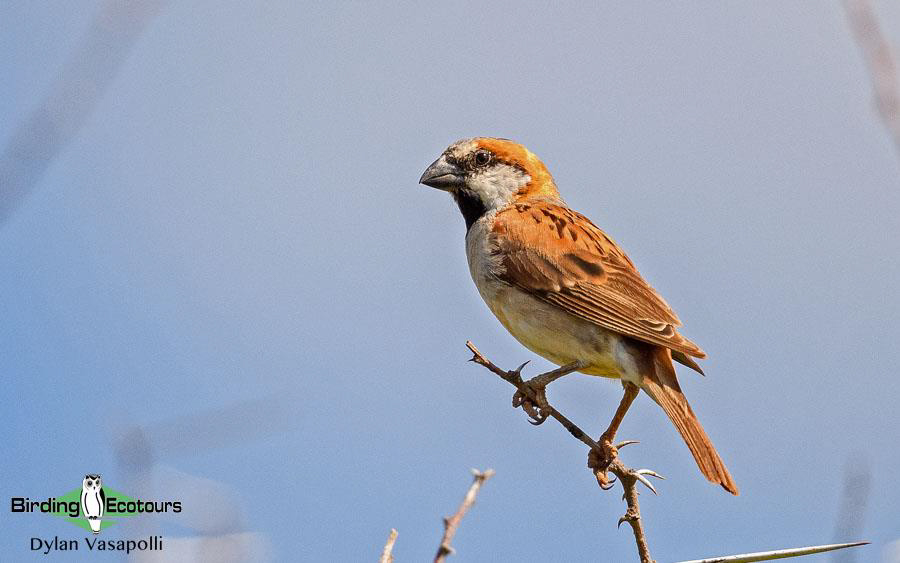
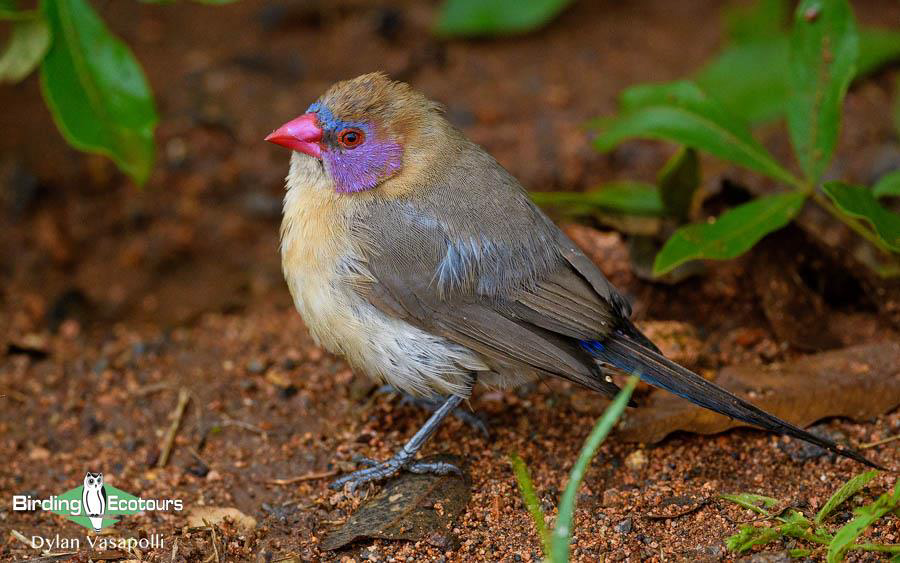
DOWNLOAD TRIP REPORT
‘We went out to Marievale with Dylan to (re)connect with some South African birds after some years away from SA. It was a wonderful experience. Dylan was charming, helpful and incredibly knowledgeable about the birds. We saw over 50 species in a morning and learned a lot about the birds. We would highly recommend Birding Ecotours for an excellent birding experience.’
Linda
